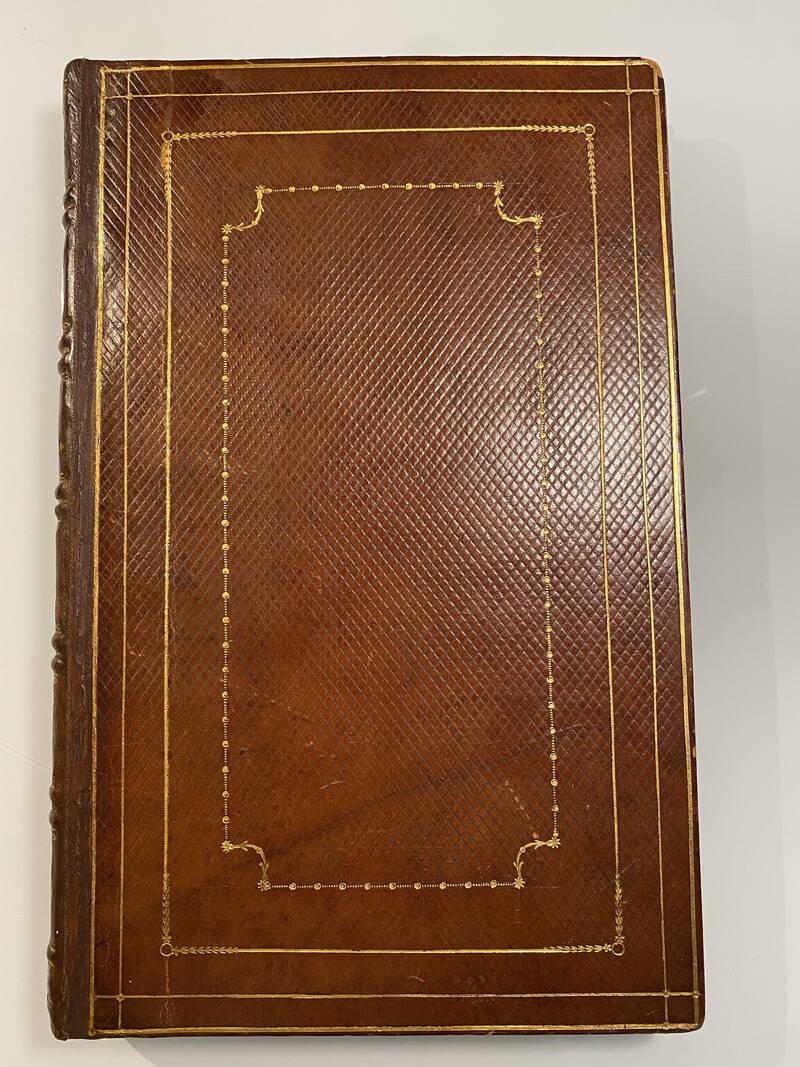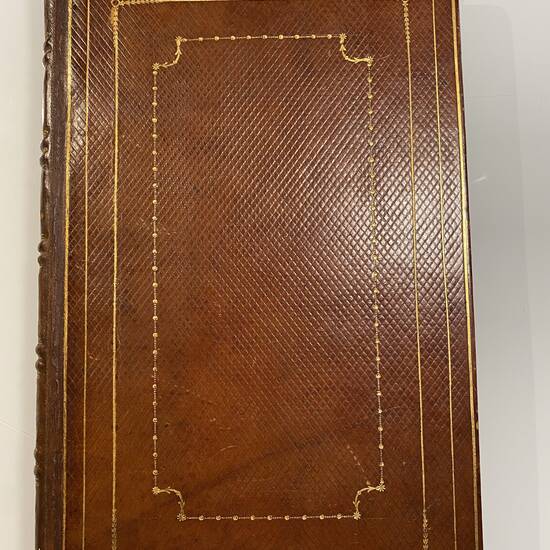AESOP. Vita & fabellae Aesopi cum interpretatione Latina ... Gabriae Fabellae tres & quadraginta ... Phurnutus seu, ut alii, Curnutus De natura deorum. Palaephatus de non credendis historiis. Heraclides Ponticus de allegoriis apud Homerum. Ori Apollinis Niliacihieroglyphica. Collectio proverbiorum Tarrhaei, e Didymi, item eorum, quae apud Sudam aliosque habentur ... Ex Aphthonii exsercitamentis de Fabula ... De fabula ex imaginibus Philostrati ... Ex Hermogenis exercitamentis De fabula Prisciano interprete. Apologus Aesopi de Cassita apud Gellium.
Venice: Aldus Manutius, October 1505., Aldus Manutius., October 1505.Folio (281 x 178mm). Text of Aesop and Gabrias in Greek and Latin, the others in Greek. Aldine anchor on title and verso of final leaf. Late 18th-century diced russia with gilt crest of Sir Richard Colt Hoare on spine, gilt tooling on covers and gilt edges. Neat marginal repair to wormhole in last three leaves, occasional light spotting and soiling, extremities lightly rubbed, spine neatly restored, overall a very fine copy from the libraries of Sir Richard Colt Hoare (1758-1838; his crest on spine, Stourhead sale 1883, lot 164) — W.R. Jeudwine (bookplate; sale Bloomsbury 18 September 1984, lot 30) — Helmut Friedlaender (booklabel; sale Christie's, 24 November 1993, lot 92) — Livio Ambrogio (bookplate).
First and only Aldine edition of Aesopus' Fables, both in Greek and Latin, in an heterogeneous compilation including two fable collections (one in prose, attributed to Aesop, one in verse, attributed to Gabrias, i.e. Babrius), a biography of Aesop by the Byzantine scholar Maximus Planudes, some short treatises on the interpretation of myths and the genre of the fabula, and a collection of proverbs. ‘This edition may be considered among the rarer and more beautiful productions of the Aldine press.' (Frognall Dibdin). Aesopus' Fables are here increased in number in comparison to the editio princeps and are provided with a new Latin translation by Aldus, which would have enjoyed great fortune in the decades following its appearance. A special mention should be given also to two of the seven works being published here for the first time, the poetic fables erroneously attributed to Gabrias and Horapollo's Hieroglyphica, the only systematic essay on the interpretation of Aegyptian hieroglyphics to survive in its entirety from Classical Antiquity. In producing this edition, Aldus was confronted with the problem of putting together the Greek text and the Latin translation and with the resulting problem of the numeration of pages and leaves. The Greek text is thus numerated from page 17 to page 142 (with the only exception of pages 129-130), while the Latin translation presents no numeration at all and pages 142- 173 present a numeration in columns. Aldus was not, apparently, interested in editing Aesopus' Fables as an indipendent text; rather, the edition was intended as an anthology of poetic forms considered useful for grammar school exercise. In particular, by connecting the animal fables with tales on myths and anthropomorphic gods, he provided his reader with a refined linguistic and thematic inventory, susceptible to undergoing a reuse in the field of rhetoric. “Aldus' edition of Aesop is essentially a collection of ‘fabulae' (in the rhetorical definition of implausible narratives) and their interpretations; it closely corresponds to the forms recommended by Quintilian for the grammar school, especially in that it begins with the fables and ends with the proverbs” (W.P. Weaver, Untutored Lines. The Making of the English Epyllion, Edinburgh 2012, p. 50).
Adams A-278; Ahmanson-Murphy 93; Renouard Alde, 49-50.

